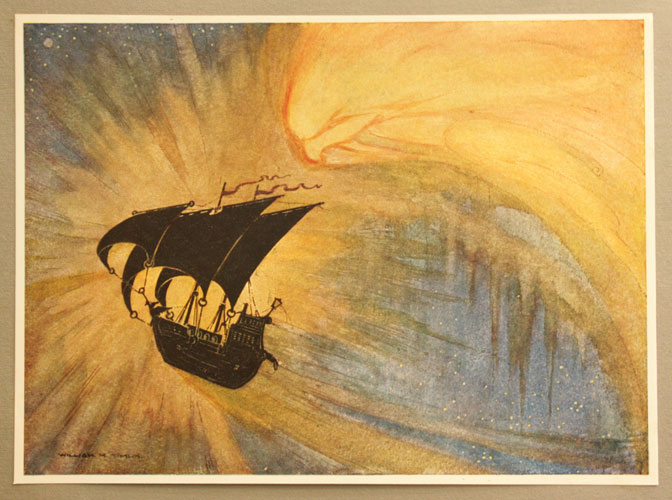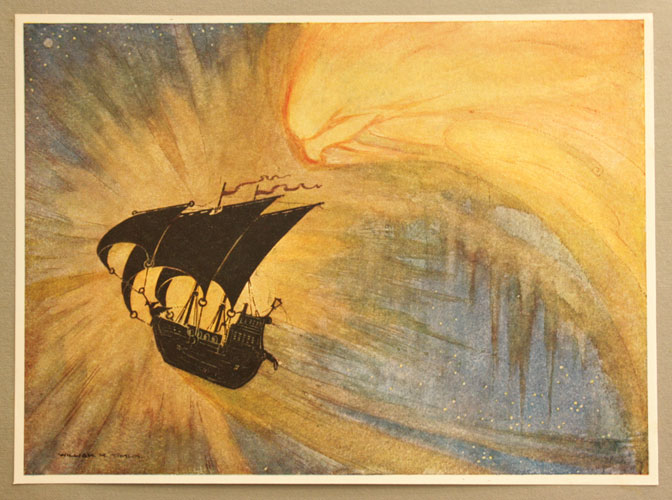The Ship that Sailed to Mars is one of those books that will reduce even adults into a state of childish awe. Written and illustrated by William M. Timlin, Peter Harrington has an incredible quarto edition bound by The Chelsea Bindery. The book is complete with 48 mounted illustrations and pages of text, unset in Timlin’s original style.

Timlin’s story has the perfect combination of wonder, fearlessness, exploration and imagination which makes it the epitome of children’s literature. This volume, handsome and richly bound is in itself the kind of book which children fantasize about, but which recently seem to exist only in cartoons.
Timlin had grown up in Northumberland, but relocated to South Africa with his family before the outbreak of World War 1. In South Africa, he established himself as a successful architect and artist, designing important buildings in his community and exhibiting regularly.
In 1921, Timlin began to write The Ship that Sailed to Mars as a project to distract his young son. Soon, he began to find the task becoming an increasingly ambitious endeavour, and it eventually took him two years to complete. The resulting volume was one of 48 pages of calligraphed text and 48 corresponding images.
Having taken on a life of it’s own, and expanded so greatly from it’s beginnings as a father and son project, Timlin knew there was something special about The Ship that Sailed to Mars, and so sent it to the publishers George Harrap. Noticing the resemblance between Timlin’s work and predecessors such as Arthur Rackham and Edmund Dulac, George Harrap decided to publish without typesetting, leaving the original work complete in all it’s majesty.
The book begins with an old man with a bold dream – to sail to Mars “by way of the moon and the most friendly planets”, despite being told by scientists and wise men that no such thing is possible. He enlists the help of the mischievous Fairies who help him to construct his ship and travel with him as his adventure begins. Along the journey they encounter various obstacles, both on earth and en route to Mars.
The work was published in an edition of 2,000, with only 250 being sent to the US. Despite the small number of copies which made their way across the atlantic, the book proved a huge hit and the film rights were even purchased from Timlin, although no film was ever made. The legacy of this small production lives on in this beautifully produced edition.





